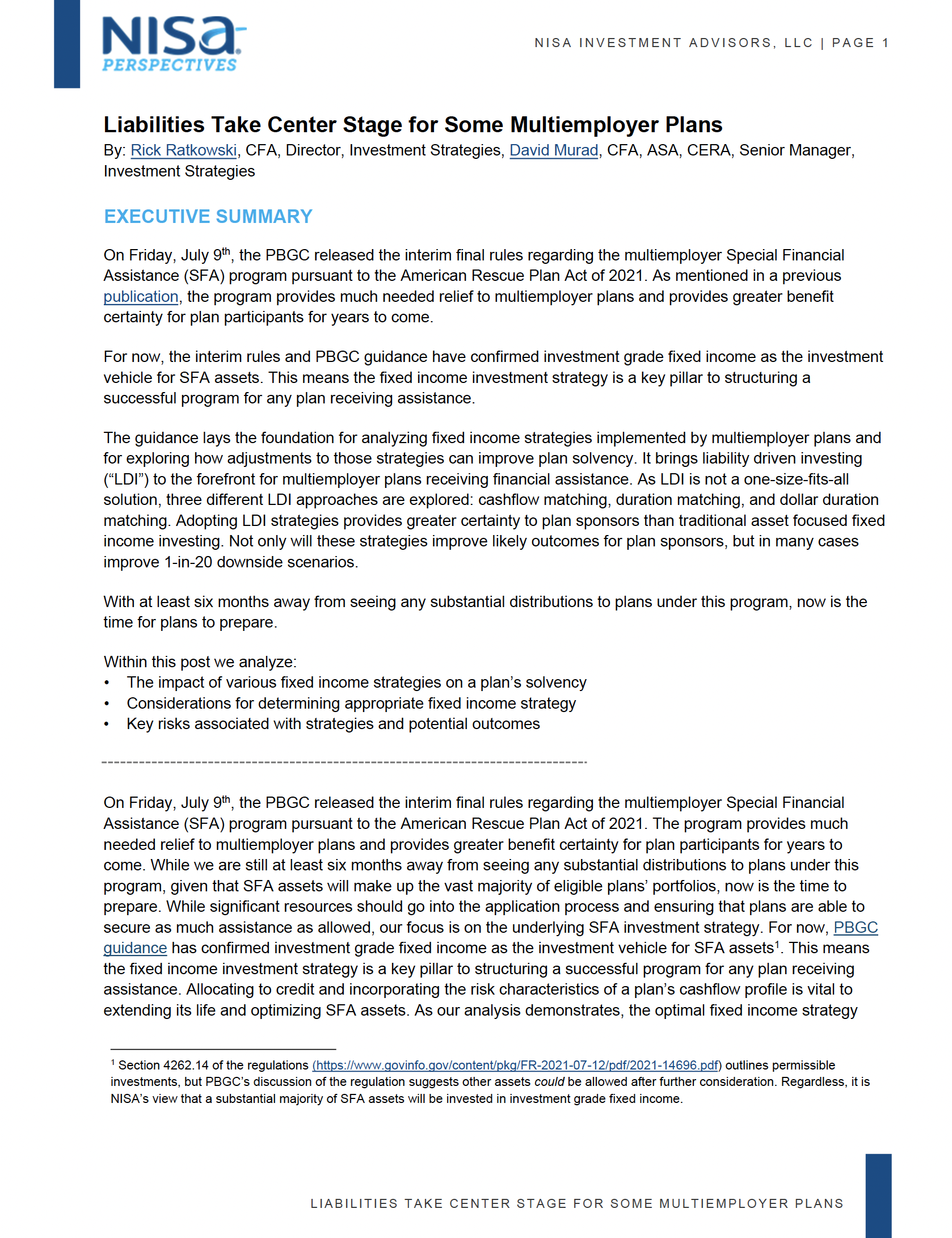Executive Summary
On Friday, July 9th, the PBGC released the interim final rules regarding the multiemployer Special Financial Assistance (SFA) program pursuant to the American Rescue Plan Act of 2021. As mentioned in a previous publication, the program provides much needed relief to multiemployer plans and provides greater benefit certainty for plan participants for years to come.
For now, the interim rules and PBGC guidance have confirmed investment grade fixed income as the investment vehicle for SFA assets. This means the fixed income investment strategy is a key pillar to structuring a successful program for any plan receiving assistance.
The guidance lays the foundation for analyzing fixed income strategies implemented by multiemployer plans and for exploring how adjustments to those strategies can improve plan solvency. It brings liability driven investing (“LDI”) to the forefront for multiemployer plans receiving financial assistance. As LDI is not a one-size-fits-all solution, three different LDI approaches are explored: cashflow matching, duration matching, and dollar duration matching. Adopting LDI strategies provides greater certainty to plan sponsors than traditional asset focused fixed income investing. Not only will these strategies improve likely outcomes for plan sponsors, but in many cases improve 1-in-20 downside scenarios.
With at least six months away from seeing any substantial distributions to plans under this program, now is the time for plans to prepare.
Within this post we analyze:
• The impact of various fixed income strategies on a plan’s solvency
• Considerations for determining appropriate fixed income strategy
• Key risks associated with strategies and potential outcomes
Originally published on August 5, 2021. Revised on February 15, 2022.




